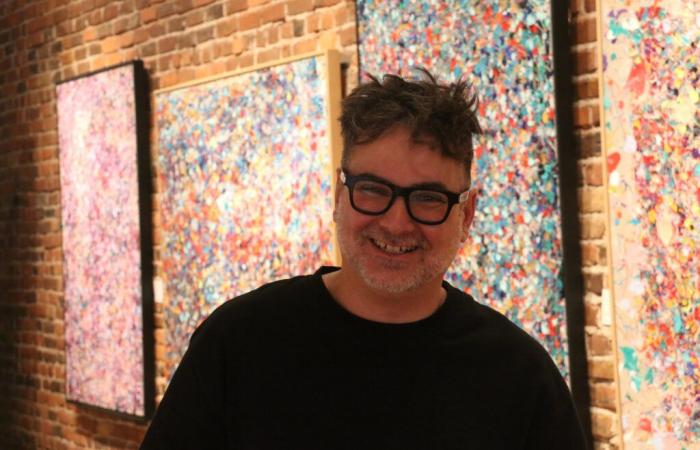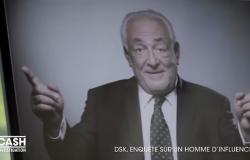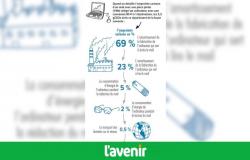The Galerie Berthelet in Trois-Rivières presents a premiere exhibition of the most recent large-format works of the painter Jean-Philippe Fortin.
“I arrived from the North Shore, a place that I love enormously and where I completely free my mind. When Caroline St-Pierre called me to offer to do an exhibition at the Galerie Berthelet. I had in mind to name the exhibition Between the St. Lawrence River and the Boreal Forest. From then on, I began to examine the colors of the North Shore a lot, says Jean-Philippe Fortin. The Northern Lights are magnificent, as are the flowers that we come across on the side of the road which are a purple that you don’t see elsewhere. The color of the sunsets is not the same there either. I tried to reflect these colors and hues particular to the North Shore in the exhibition. »
In his large-format, textured and immersive works, Fortin explores the relationship between nature and climate, while offering a reflection on the preservation of Quebec ecosystems through the intensity of colors and depth of his creations.
The artist specializes in projection, a technique which consists of projecting paint from a distance onto the canvas or any other support.
“Projection is also a science, because if I want my painting to remain faithful to the colors and the red that I throw on the yellow to remain red, I had to understand the science behind the art,” explains Jean -Philippe Fortin. I like to say that I became a crazy colorist because it’s chemistry. In particular, it is necessary to add weight to the paint. “
For two or three years, his studio was a laboratory in which he tried to understand the chemistry of paint and the ways to achieve a precise projection without it becoming a disaster and for everything to be aesthetically beautiful.
“I have reached this place where, artistically, my projection evolves a lot,” he adds. For example, the dripping invented by Pollock, I’m trying to push it to the maximum at the moment. I don’t know what it will look like in the coming years, how it will evolve. Paul-Émile Borduas also influenced me with his technique, his thick colors and the geometry in his works. »
When 3D gets involved
The exhibition is unique in that it is also possible to appreciate the fifteen works through the filter of 3D glasses. The work then comes to life in a completely different way: the reds stand out from the canvas, the blues sink in, new unsuspected textures emerge. The effect varies if we are further from the work, closer, more at an angle.
“These glasses are trick players because they lead us to see colors which will reflect or which will come out of the painting. It’s the mixture between the different colors that makes you feel like you’re entering the painting. These glasses take us to another level. I call it living art,” notes Jean-Philippe Fortin.
It was a young artist from Quebec, Mégane Fortin, who brought him 3D glasses when he bought one of her works. “At one point, I looked at my paintings with these glasses and I fell backwards! I realized there was something going on. The first thing I did was go to Montreal to see Riopelle with the glasses. Wow! I understood that there was a system of thickness, that you have to put several layers. I like to say that you get inside my head with these glasses. »
Moreover, to better understand the different effects induced by the use of 3D glasses, the artist carried out numerous tests while wearing said glasses.
“For me, it’s important that art leaves an imprint, an emotion. I love seeing people take a break and spend time in front of a painting and seeing them feel something. It’s my greatest pleasure. I understand that something happened between the person and the painting. »
The works of Jean-Philippe Fortin are exhibited at the Galerie Berthelet (rue des Forges) until December 1st.
Afterwards, he will work on a large-scale project linked to the heritage of the glaciers of Northern Canada.
“It will be a large series of paintings. It’s a big project compared to putting the footprint of certain glaciers on paintings. The entire creation process will be documented. It’s a series that I hope will be educational and leave an imprint. I am very close to nature and the environment. Those who know me will quickly understand where I am going with this,” concludes Jean-Philippe Fortin.






